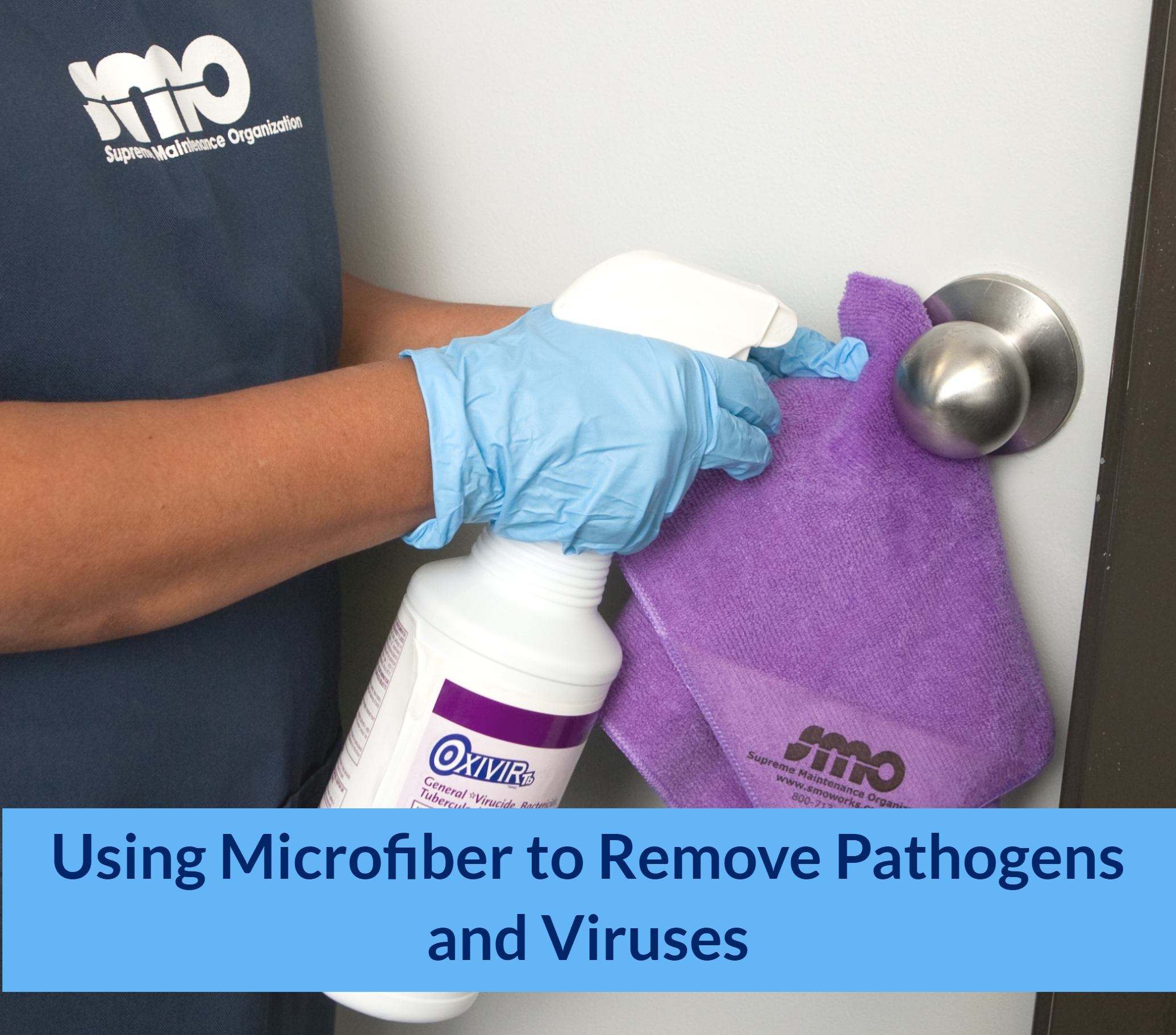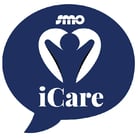
As businesses across the county begin to reopen, the adherence to robust cleaning and disinfection routines will be critical. Keeping employees safe from the COVID-19 virus will continue to require diligence and attention to detail. When used properly, microfiber products can be an important tool in the anti-virus toolkit.
What is Microfiber and How Does it Work?
As the name implies, microfiber is extremely small. An individual microfiber is about 1/5 the diameter of a human hair (some products can be even smaller). Microfibers carry a positive electrical charge which creates an electrostatic attraction between the fibers and the negatively charged particles that are being removed from a surface. That electrostatic force not only attracts dust and contaminates to the fiber, it also traps and hold them. This make microfiber a much more efficient collector of pathogen-carrying dust and dirt than traditional cloth or paper products.
It is important to note that microfiber does not kill pathogens, bacteria, or viruses. Its purpose is to remove those elements from the surfaces you are cleaning. The killing of any microbes will occur once the microfiber product is properly washed and rinsed.
How to Properly Use Microfiber Products
Getting the maximum benefit from your microfiber cleaning products will require that you adhere to a few best-practices. Those would include:
- Selecting the right product: There are a variety of microfiber products on the market that have been designed for specific cleaning tasks (dusting, scrubbing) as well as for specific surface types. Make sure to match the right microfiber product with the right cleaning task.
- How to use microfiber cloth: For best results, fold the cloth in half and then fold it in half again. Doing this will give you a total of eight surfaces with which to work. When one surface becomes overly soiled, or begins to leave residue behind, simply fold over to a new section of the cloth. For dusting, you should leave the cloth dry. For scrubbing, you will want to dampen the cloth with water or an appropriate cleaning solution.
- Reusing Microfiber: One of the many advantages of microfiber is that it can be reused after a proper cleaning. Cleaning will consist of the follow steps:
- After each use rinse the microfiber cloth with warm to hot water (depending on manufacturer's instructions) for 30 seconds or until the water is running clear.
- Microfiber cloths that are used daily should be machine-washed on a weekly basis. Do not use bleach or fabric softener as this will likely damage the microfibers. Dry the cloths per the instructions provided by the manufacturer.
When using microfiber products to remove pathogens and viruses it is essential to wear appropriate PPE during the cleaning process as well as during the process of washing the microfiber cloths.
Microfiber can be an effective tool in the removal of pathogens and viruses. If unsure how to use microfiber it is advisable to consult with a service provider that has proven experience in using these products.




.jpg?width=220&height=135&name=Blog%20Listing%20Image%20(14).jpg)
.jpg?width=220&height=135&name=Blog%20Listing%20Image%20(13).jpg)

.png?width=180&height=138&name=Untitled%20design%20(25).png)


